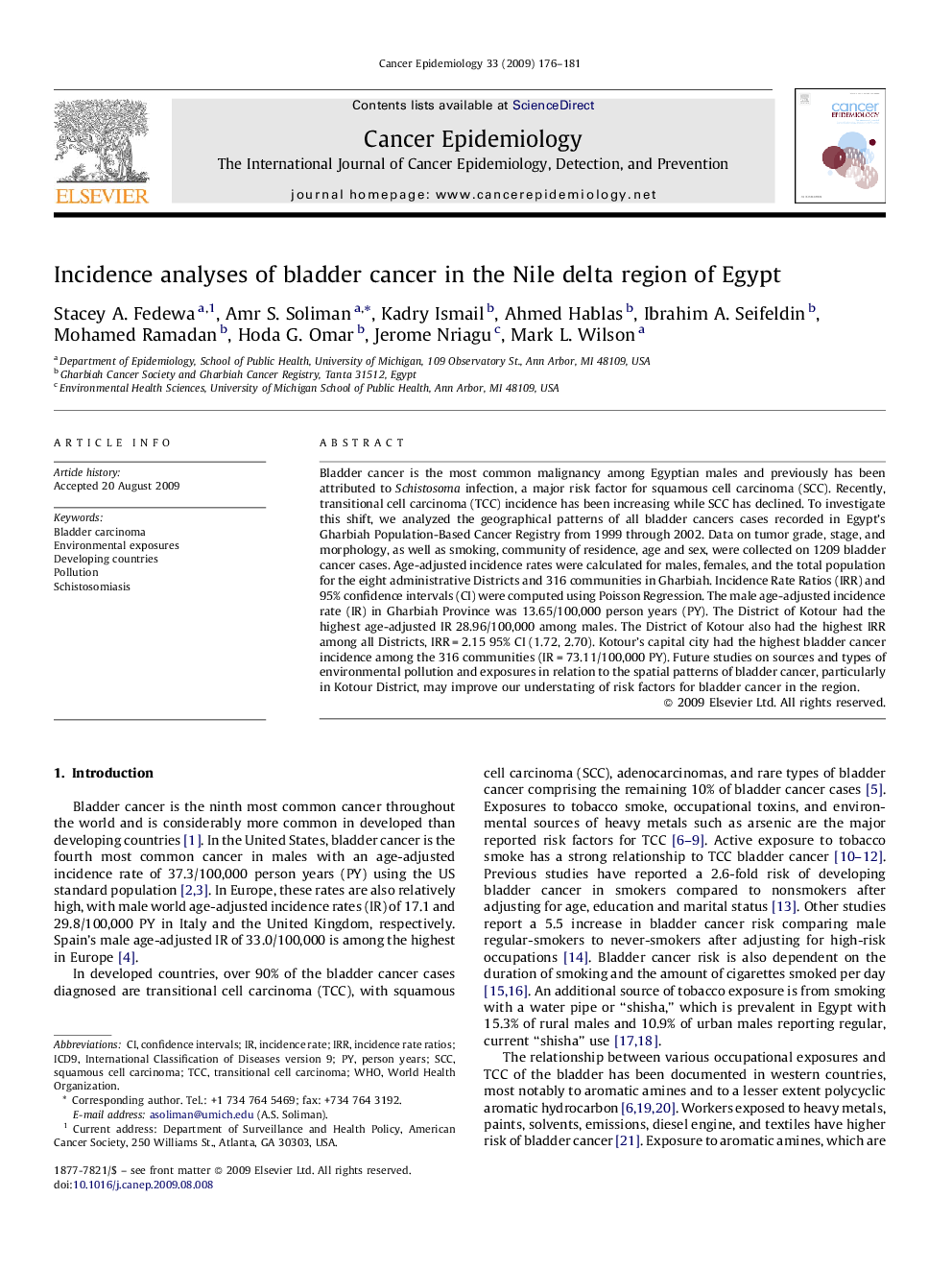| Article ID | Journal | Published Year | Pages | File Type |
|---|---|---|---|---|
| 2109373 | Cancer Epidemiology | 2009 | 6 Pages |
Abstract
Bladder cancer is the most common malignancy among Egyptian males and previously has been attributed to Schistosoma infection, a major risk factor for squamous cell carcinoma (SCC). Recently, transitional cell carcinoma (TCC) incidence has been increasing while SCC has declined. To investigate this shift, we analyzed the geographical patterns of all bladder cancers cases recorded in Egypt's Gharbiah Population-Based Cancer Registry from 1999 through 2002. Data on tumor grade, stage, and morphology, as well as smoking, community of residence, age and sex, were collected on 1209 bladder cancer cases. Age-adjusted incidence rates were calculated for males, females, and the total population for the eight administrative Districts and 316 communities in Gharbiah. Incidence Rate Ratios (IRR) and 95% confidence intervals (CI) were computed using Poisson Regression. The male age-adjusted incidence rate (IR) in Gharbiah Province was 13.65/100,000 person years (PY). The District of Kotour had the highest age-adjusted IR 28.96/100,000 among males. The District of Kotour also had the highest IRR among all Districts, IRRÂ =Â 2.15 95% CI (1.72, 2.70). Kotour's capital city had the highest bladder cancer incidence among the 316 communities (IRÂ =Â 73.11/100,000 PY). Future studies on sources and types of environmental pollution and exposures in relation to the spatial patterns of bladder cancer, particularly in Kotour District, may improve our understating of risk factors for bladder cancer in the region.
Keywords
Related Topics
Life Sciences
Biochemistry, Genetics and Molecular Biology
Cancer Research
Authors
Stacey A. Fedewa, Amr S. Soliman, Kadry Ismail, Ahmed Hablas, Ibrahim A. Seifeldin, Mohamed Ramadan, Hoda G. Omar, Jerome Nriagu, Mark L. Wilson,
